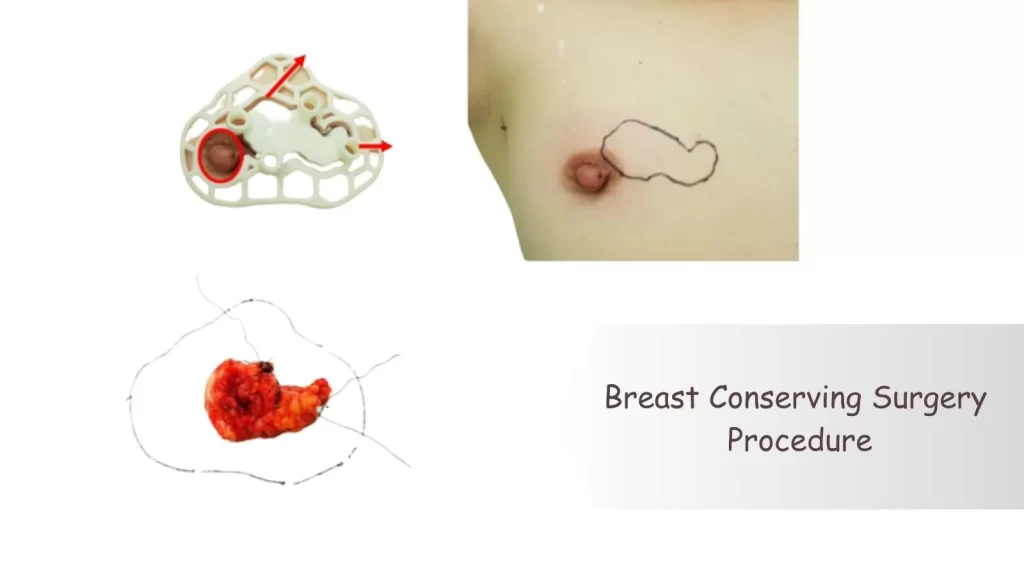
Breast-conserving surgery (BCS) eliminates malignancy while preserving the greatest amount of healthy breast tissue. Numerous lymph nodes and any nearby healthy tissue are frequently also removed. Depending on how much tissue is removed during the procedure, breast-conserving surgery may also be referred to as a lumpectomy, quadrantectomy, partial mastectomy, or segmental mastectomy.
In order to ascertain whether cancer has spread there, the surgeon may also remove some of the lymph nodes under your arm. Breast cancer can usually be disseminated to these lymph nodes. Then, it could spread to different parts of the body.
After BCS, radiation therapy is typically used. This eliminates cancerous cells that may not have been surgically eliminated. Chemotherapy and radiation can be administered following BCS in rare cases.
Purpose of Breast-Conserving Surgery
BCS is an option for breast cancer treatment. Some women with a small, localized lump may decide for this procedure. Many people with breast cancer in the early stages have it as an option.
Breast-conserving surgery aims to remove cancer or other abnormal tissue while leaving your breasts looking normal. If a biopsy reveals that you have cancer and the tumor is thought to be small and in its early stages, your doctor may advise a BCS. According to studies, a BCS followed by radiation therapy is just as beneficial as a mastectomy for treating early-stage breast cancer in preventing a recurrence of the disease.
Learn more – Breast Cancer Treatment cost in India
Who is Eligible For Breast Preservation Surgery
Many women with early-stage malignancies should consider breast-conserving surgery (BCS). The greatest benefit is that the majority of a woman’s breast is kept. The majority of women will also require radiation therapy, which is administered by a radiation oncologist (a medical professional who specialises in radiation). Women who get a mastectomy for early-stage tumors are less likely to require radiation therapy, but because every patient’s disease is different, they can still be referred to a radiation oncologist for assessment.
Risk – Every surgery carries some risk. Here are some of a few potential BCS side effects:
- Brief (temporary) breast enlargement
- A change in the breast’s size and form
- Hardness brought on by possible scar tissue at the surgical location
- Bleeding or infection of a wound
- Arm swelling (lymphedema) following lymph node removal
After BCS, the wound frequently has a clear fluid (seroma). If necessary, this can be compressed and emptied in the operating room. There may be additional risks based on your unique medical condition. Before the procedure, make careful to express any worries you have with your surgeon.
Breast Conserving Surgery Procedure
A few days prior to your BCS you will meet with your specialist. Bring a list of inquiries to serve as a reminder to ask all the questions you have. Make sure you are aware of the hazards and the procedure. You’ll receive advice on pre-surgical limitations and other matters you should be aware of. Typically, the operation is performed as an outpatient procedure, allowing you to return home the same day. You ought to notify your doctor about any medications, vitamins, or dietary supplements you are taking in case they have an impact on the treatment.
Depending on your situation and your doctor’s practices, the procedures could change. BCS often follows this procedure:
- After being instructed to take off your clothes, you will be handed a gown to wear.
- An intravenous (IV) line may be initiated with your arm or hand.
- Your position on the operation table will be on your back.
- Local anesthesia may be used during BCS. This implies that the surgical site will be numbed. Before the surgery, you will get sedative medication via IV to help you unwind. While having surgery, you’ll probably feel sleepy despite remaining awake.
- General anesthesia may also be used when doing BCS. During surgery, you will be given medication to put you into a deep slumber.
- Throughout the procedure, your heart rate, blood pressure, respiration, and blood oxygen level will be monitored.
- The area of skin close to the surgical site will be cleaned with a sterile solution.
- There will be a small cut (incision) made over or close to the breast tumor. The bulge or irregularity will be removed by the doctor. Additionally, some of the surrounding healthy breast tissue will be removed.
- It may be necessary to make a separate surgical cut in or close to the armpit if the lymph nodes under your armpit need to be removed.
- Any excised samples, including breast tissue, will be forwarded to the lab for analysis.
- The afflicted area might have a drainage tube installed.
- Stitches or adhesive strips will be used to close the skin.
- Afterward, the area will be bandaged or dressed in sterile dressings.
 Recovery
Recovery
- The majority of BCS are performed as outpatient surgeries, allowing the patient to leave the hospital and return home the same day. Depending on the severity of the case, it can be necessary in some instances to spend the night in the hospital.
- Complete healing could require a month. The period of recuperation varies based on the procedure type, anesthesia type, patient’s overall health, age, and other considerations. Healing after surgery is a lengthy process.
- Both the radiation’s timing and intensity might change. View Additional Therapies and Self-Care.
Helpful: Top 10 Oncologists in India
Care For The Arm Following Lymph Node Removal
The removal of lymph nodes during BCS may influence how lymphatic fluid drains from your arm. Your arm may enlarge if there are issues with lymphatic drainage. Your chance of contracting an infection after an arm injury may also be higher. Additionally, after surgery in the area, there is an increased chance of blood clots developing in your armpit veins.
Following lymph node removal, you will need to adhere to a few safety precautions for the rest of your life. This will lessen the likelihood of issues in the affected arm. These safety measures consist of:
- There will be no needle sticks or IVs inserted into the affected arm.
- No readings of the affected arm’s blood pressure
- Pay close attention to the arm workout instructions.
- Avoid giving the affected arm any wounds like scrapes or splinters.
- To help lymphatic fluid drain, raise (elevate) the arm with your hand over your elbow.
- When gardening or engaging in any activity where getting cut on your fingers or hands is a possibility, wear gloves. When utilizing powerful or harsh chemicals, such as detergents or home cleaners, you should also wear gloves.
- Prevent sunburns
- Shave the area beneath your arm using a fresh razor.
- On the injured arm, stay away from tight clothing. This includes jewelry, tight watches, and elastic wristbands.
- Heavy items, bags, or purses should be carried using your strong arm or both arms.
- Use insect repellents or wear long sleeves to protect yourself from pest bites and stings.
Depending on your circumstance, your doctor might give you different advice.
Reference
- https://www.facs.org/for-patients/home-skills-for-patients/breast-cancer-surgery/understanding-your-operation/lumpectomy/
- https://www.cancer.org/cancer/types/breast-cancer/treatment/surgery-for-breast-cancer/breast-conserving-surgery-lumpectomy.html
- https://www.hopkinsmedicine.org/health/treatment-tests-and-therapies/breast-conserving-surgery


